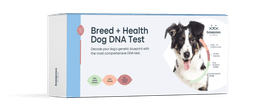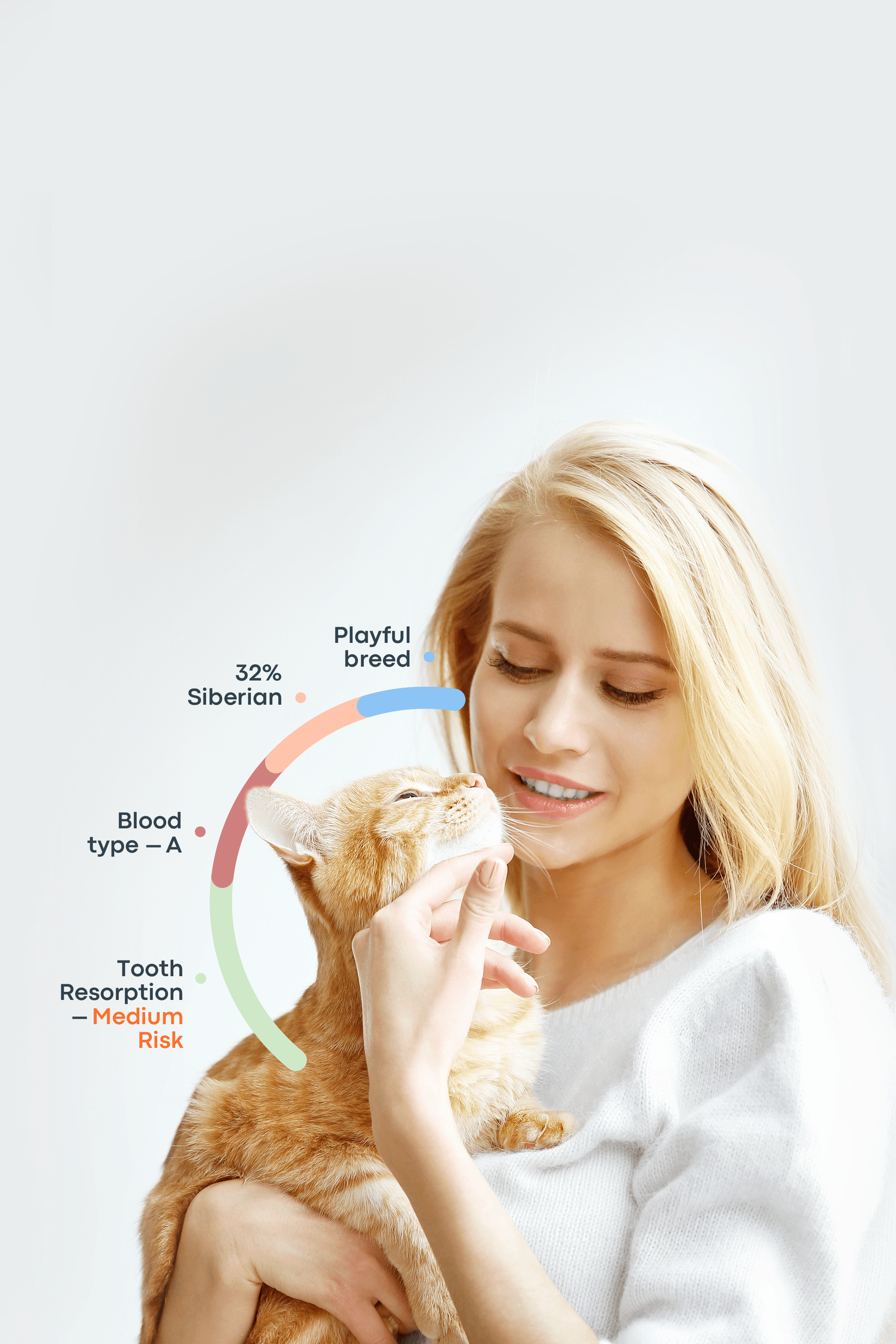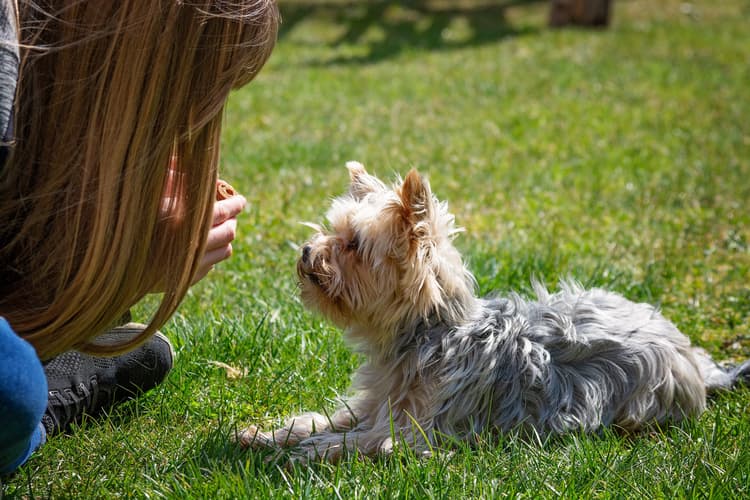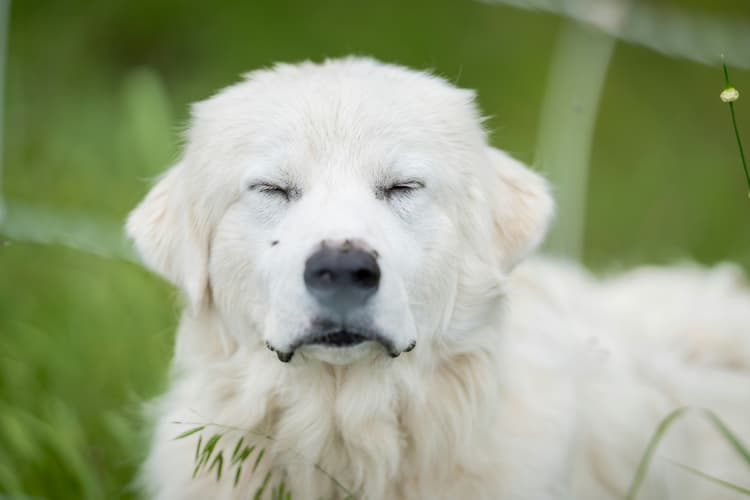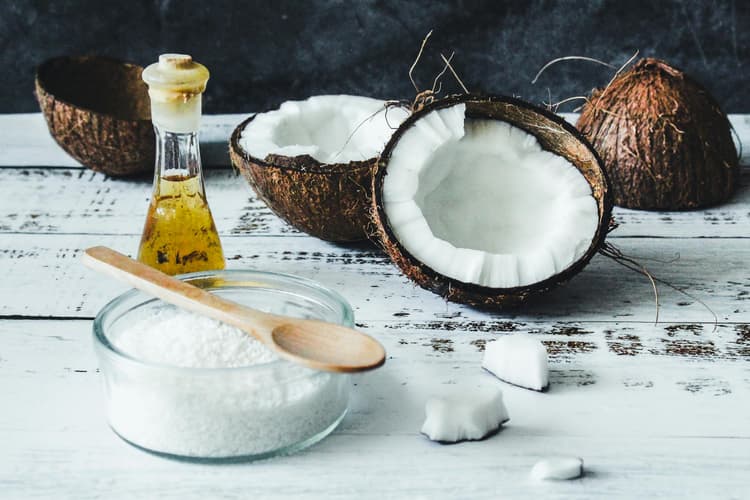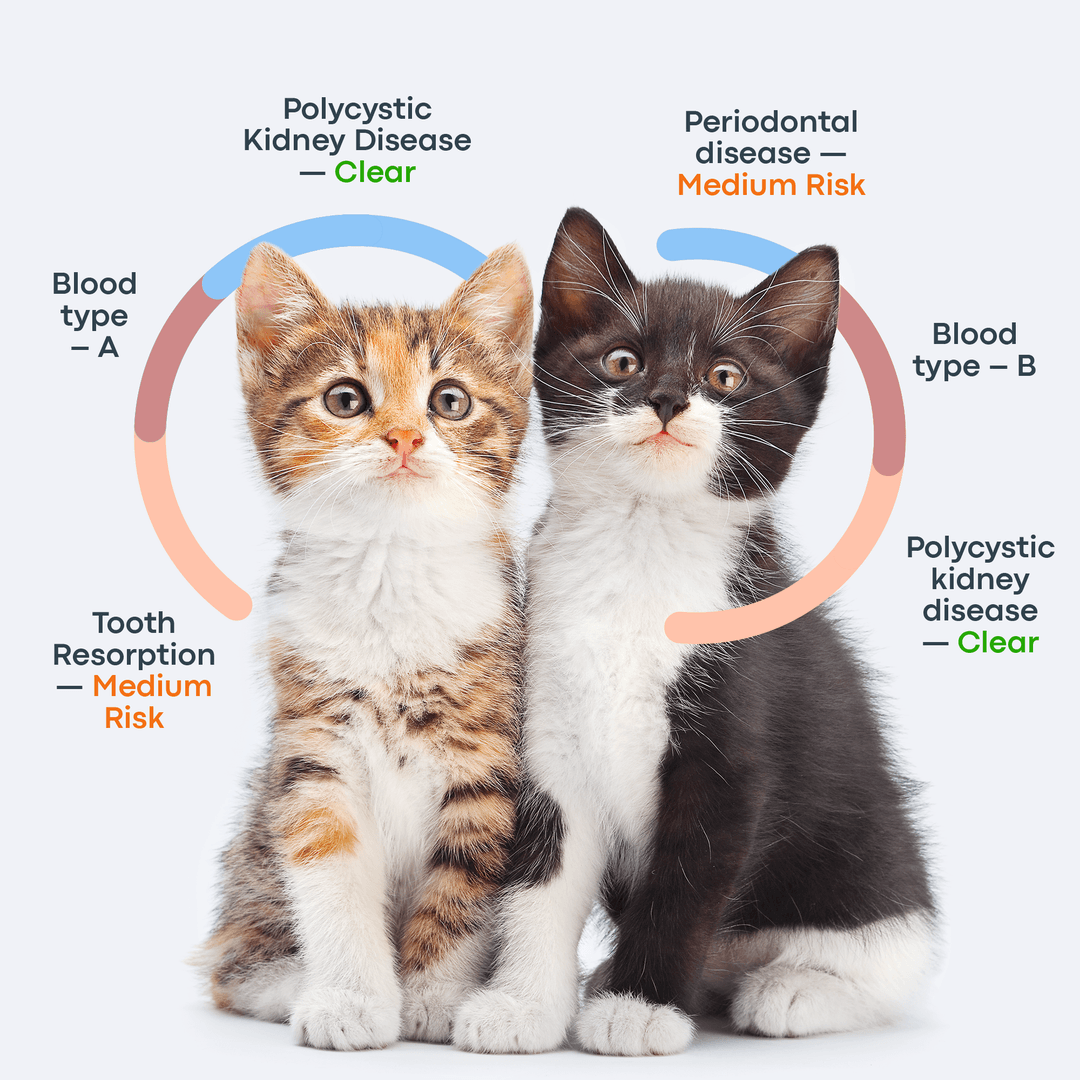A heat, also called “being in season” or estrus, is the fertile stage in a female dog’s reproductive cycle when she can become pregnant. Unlike humans, dogs do not menstruate in the same way and there is no “dog menstruation” per se, but they do experience a discharge and significant hormonal changes. These changes often bring physical symptoms and behavioral shifts that can be confusing for the dog.
As a pet parent, recognizing the signs of heat is essential so you can provide the right support and care. Heats can vary depending on a dog’s age, breed, and size, with some dogs requiring more attention than others. Common challenges include managing bleeding, handling behavioral changes like restlessness or seeking male attention, and preventing accidental mating.
While going into heat is a normal and healthy part of a dog’s reproductive system (unless she has been spayed), knowing how to help your pet during this period can make her feel safer, calmer, and more comfortable.
Understanding the Dog Heat Cycle
Just like human females have a reproductive cycle with distinct stages, female dogs go through their own cycle—though it’s a bit different. Some people casually refer to it as “dog periods,” but unlike humans, dogs do not shed the uterine lining in the same way. Instead, the heat cycle in dogs can be divided into four stages: Proestrus, Estrus, Diestrus, and Anestrus.
1. Proestrus (about 4–20 days)
This is the lead-up to the fertile stage. Estrogen levels rise, and the eggs begin to mature in preparation for release. During this time, male dogs are often drawn to the female, but she is not yet receptive to mating. You’ll likely notice swelling of the vulva and a bloody or blood-tinged discharge. Some females may also seem more clingy or restless.
2. Estrus (about 5–14 days, but it varies)
Estrus is the stage when the female is fertile and capable of becoming pregnant. Estrogen levels fall while progesterone rises, preparing the body for pregnancy. This is the time when females typically seek out males and may allow mating. Discharge often becomes lighter in color—pinkish or straw-colored. Owners need to be especially cautious during this phase to keep unspayed females away from intact males, as accidental matings are common.
3. Diestrus (about 60–90 days)
After estrus, progesterone levels remain high to either support a pregnancy or mimic one. Even if the dog isn’t pregnant, her body may behave as though she is. This can sometimes result in pseudopregnancy (false pregnancy), where females may show nesting behaviors, enlarged mammary glands, or even produce milk.
4. Anestrus (about 4–5 months)
This is the resting or dormant stage between heat cycles. Hormone levels drop, reproductive organs return to normal, and the dog behaves like her usual self. This phase is the longest and allows the body to recover before the next cycle begins.
When Do Dogs Go Into Heat?
Most female dogs experience their first heat between 6 and 24 months of age. While that may seem like a wide range, the exact timing depends heavily on the dog’s breed, size, and overall health.
Small breeds often reach sexual maturity faster, sometimes going into heat as early as 4–7 months.
Larger breeds, on the other hand, may not have their first cycle until 12–24 months.
Surprisingly, several external factors can also influence when a dog goes into her first heat. These include:
Environment and climate – dogs in warmer or more stable climates may cycle earlier.
Nutrition – poor diet or malnutrition can delay the onset of heat.
Stress levels – stressful living conditions may suppress or postpone cycles.
Light exposure – just like in some other mammals, seasonal daylight changes can affect hormone cycles.
What Age Do Female Dogs Go Into Heat?
Dog Size / Breed Type | Typical Age of First Heat | Notes & Influences |
Toy & Small Breeds (e.g., Chihuahua, Yorkshire Terrier) | 4–7 months | May cycle earlier than larger breeds; often have 2–3 heats per year. |
Medium Breeds (e.g., Beagle, Cocker Spaniel) | 6–12 months | Most first heats occur around 8–10 months. |
Large Breeds (e.g., Labrador Retriever, Golden Retriever) | 10–18 months | Some may not cycle until closer to 18 months; usually 1–2 heats per year. |
Giant Breeds (e.g., Great Dane, Mastiff) | 18–24 months | First heat may be quite late; often only 1 cycle per year. |
How Often Do Dogs Go Into Heat?
On average, most female dogs go into heat twice a year, or roughly every six months. However, this can vary depending on the dog’s breed, size, and individual cycle:
Toy and small breeds may come into heat more frequently, sometimes three times per year.
Large and giant breeds tend to cycle less often, with some experiencing heat only once a year.
Unlike humans, dogs do not go through menopause. They continue to have heat cycles throughout their lives, though cycles may become less regular and fertility naturally decreases as they age.
How Long Are Dogs in Heat?
A typical heat lasts 14–21 days, with the maximum length usually around four weeks. During this period, your dog can become pregnant, though her fertile window only covers part of the cycle.
Fertility usually peaks around days 9–10 of the cycle, but this can vary.
Some dogs may be receptive to males earlier or later, so it’s safest to assume that any time during heat carries a pregnancy risk.
Visible signs, such as a change in discharge color (from red to lighter pink or straw-colored) and a more welcoming attitude toward males, often indicate the fertile phase.
Is a Dog’s First Heat Shorter?
A female dogs first heat is often more unpredictable than later cycles. Some dogs experience a shorter or irregular first heat, while others go through a cycle that looks very typical. Because each dog develops at her own pace, it’s best for owners to keep a close eye on the signs rather than relying only on averages. Tracking your dog’s first heat can help you predict future cycles more accurately.
Dog in Heat Symptoms
When a dog is in heat, you may notice a combination of behavioral and physical symptoms. These are all normal side effects of the hormonal changes happening in her body.
Common Behaviors of a Female Dog in Heat
Increased affection or clinginess – Your dog may demand more cuddles, follow you around the house, or seem more attached than usual.
Restlessness, nervousness, or agitation – This can show up as panting, pacing, whining, or hypervigilance. Some dogs even seem “on edge.”
Crying, whining, or attempts to escape – Her hormones are driving her to find a mate, which may make her try to run out the door or dig under fences. This can also be fueled by anxiety and physical discomfort.
Mounting behavior – She may mount other dogs, household objects, or even her owners. If this happens, avoid punishment—simply redirect her attention or calmly move away.
Frequent urination or marking – Heat hormones can make her urinate more often, sometimes in unusual places, to signal her readiness to male dogs. Using an enzymatic cleaner is important to remove scent markers and prevent repeated accidents in the same spot.
Physical Signs of Dog in Heat
Along with behavioral changes, dogs in heat also show clear physical signs. These are the most common symptoms to watch for:
Swollen vulva – The vulva becomes visibly enlarged during heat. While it may look alarming, especially for first-time pet parents, this is a normal part of the cycle.
Bloody or straw-colored discharge – Discharge typically starts thick and bloody, then becomes lighter, thinner, and straw-colored as the fertile period approaches. Keeping a record of the appearance and timing can help you better predict your dog’s future cycles.
Swollen nipples – Hormonal changes during heat may cause the nipples to appear larger or more prominent, even if the dog is not pregnant.
Tail position changes – Many females hold their tails to the side (“flagging”) as a signal to males that they are receptive to mating.
Do Dogs Stop Eating When in Heat?
A loss of appetite is fairly common when a dog is in heat, especially during the early days of the cycle. Hormonal changes can affect mood, behavior, and eating patterns.
If your dog skips a meal or two but otherwise seems healthy, it’s usually nothing to worry about.
If she refuses food for more than 24 hours, or if appetite loss comes with symptoms like vomiting, diarrhea, heavy bleeding, or extreme lethargy, contact your veterinarian right away. These may point to illness rather than just normal hormonal changes.
What to Do When Your Dog Is in Heat for the First Time
Caring for a dog in heat—especially the first time—can feel overwhelming, but having a plan helps. Here are some steps to guide you:
Step 1: Recognize the Signs
Look for swelling, discharge, and behavioral changes (such as restlessness or clinginess). These are your cues that the heat cycle has begun.
Step 2: Secure Your Dog
Unless you are planning a supervised breeding, it’s crucial to keep her away from male dogs. Avoid dog parks, never let her off-leash outdoors, and ensure your yard is secure—dogs can be surprisingly determined escape artists during this time.
Step 3: Manage Hygiene
Expect some discharge. Doggy diapers, washable pads, or old towels can help manage messes. Wash her bedding frequently to keep her comfortable and reduce odors.
Step 4: Provide Comfort
Hormonal changes can make your dog restless or anxious. Offer extra attention, calm routines, and interactive toys (like puzzle feeders and chews) to keep her engaged. Make sure she stays well-hydrated.
Step 5: Keep Records
Note the start and end dates of her heat cycle. This helps you predict the next one and provides useful information for your veterinarian.
Step 6: Watch for Health Changes
Monitor her closely for anything unusual. Seek veterinary care if you notice:
Appetite loss lasting more than 24 hours
Vomiting, diarrhea, or lethargy
Unusually heavy or foul-smelling discharge
Increased thirst or urination
Optional Step 7: Plan for Spaying
If you don’t plan to breed your dog, talk to your vet about spaying. This procedure prevents future heats, eliminates the risk of accidental pregnancies, and significantly reduces the chances of certain health problems, such as pyometra (a life-threatening uterine infection) and some cancers.
How to Stop a Dog in Heat From Bleeding
Unfortunately, there’s no way to completely stop the bleeding during a heat cycle—it’s a normal and healthy part of the process. However, you can manage it to keep both your dog and your home comfortable:
Dog diapers or belly bands – These collect discharge and help prevent messes. Be sure to change them frequently to maintain hygiene and reduce irritation.
Towels, washable blankets, or slipcovers – Place them on furniture and bedding to protect against stains.
Designated rest areas – Keeping your dog in an area with easy-to-clean flooring (like tile or laminate) during the heaviest days can make cleanup easier.
Frequent cleaning – Wash bedding, towels, or covers regularly to prevent odor buildup and maintain comfort for your dog.
Remember: if bleeding seems excessively heavy, has a foul odor, or continues much longer than normal (over 4 weeks), contact your veterinarian. These may be signs of infection or another medical issue.
At What Age Should I Spay My Dog?
The best age for spaying depends on your dog’s size, breed, and health:
Small to medium breeds – Usually spayed around 5–6 months of age, before their first or second heat.
Large and giant breeds – Often spayed later, at around 12–18 months, to allow proper bone and joint development.
Other factors – Your vet may adjust the timing based on your dog’s overall health, living environment, and whether breeding is planned.
Spaying not only prevents unwanted pregnancies but also brings important health benefits:
Reduces the risk of mammary (breast) tumors, especially if done before the second heat.
Completely eliminates the risk of pyometra, a dangerous and often life-threatening uterine infection.
Prevents future heat cycles, which can make life easier for both the dog and the owner.
Final Tips for Pet Parents
Heat cycles bring a mix of physical and behavioral changes in female dogs, such as swelling, discharge, clinginess, anxiety, and attempts to escape. Understanding these common behaviors of a female dog in heat helps you prepare and support your dog effectively. Managing hygiene with dog diapers or washable pads, providing comfort through toys, cooling mats, or treats, and offering gentle attention can make the experience less stressful. It’s important to monitor her health and contact a veterinarian if you notice unusual symptoms like excessive bleeding, foul-smelling discharge, or a significant loss of appetite.
For a long-term solution, spaying your dog is the safest way to end heat cycles permanently. It prevents accidental pregnancies and significantly reduces the risk of serious health issues, including pyometra and mammary tumors. By staying patient and prepared, you can help your dog feel safe and comfortable during her heat cycles.
Frequently Asked Questions
Do female dogs act weird when they're in heat?
Yes. Hormonal changes during the heat cycle can affect both behavior and mood. Many dogs become clingier, seeking more attention from their owners, while others may appear restless or anxious. Some dogs may even show sudden changes in temperament, such as irritability or being more vocal. Understanding that these behaviors are temporary helps you respond with patience rather than frustration.
Are dogs more hyper in heat?
Potentially. The hormonal shifts that drive restlessness, agitation, and increased energy can sometimes look like hyperactivity. Some dogs may pace, bark more, or engage in more active play than usual. Providing extra mental and physical stimulation—like puzzle toys or short walks—can help channel this energy in a positive way.
Do female dogs have a specific time of year when they go into heat?
No. Unlike some animals that have strict seasonal cycles, female dogs go into heat roughly every six months, though timing varies with breed, size, and individual factors. Small breeds may cycle more frequently, while giant breeds may only have one heat per year. Keeping track of cycles allows you to anticipate and prepare for their needs.
How to tell if your dog is in heat for the first time?
First heats can be exciting and sometimes surprising for pet parents. Key signs include physical changes like a swollen vulva and bloody or straw-colored discharge, along with behavioral changes such as clinginess, anxiety, restlessness, or attempts to escape in search of a mate. Monitoring these signs closely will help you manage her comfort and hygiene effectively.
What should I do if my dog shows unusual symptoms during heat?
While some behaviors and mild physical changes are normal, you should contact your veterinarian if you notice excessive bleeding, foul-smelling discharge, prolonged appetite loss, vomiting, or extreme lethargy. These may indicate an infection or another health issue rather than normal heat-related changes.
Reference List
https://www.petmd.com/dog/general-health/dog-vagina-health-guide

